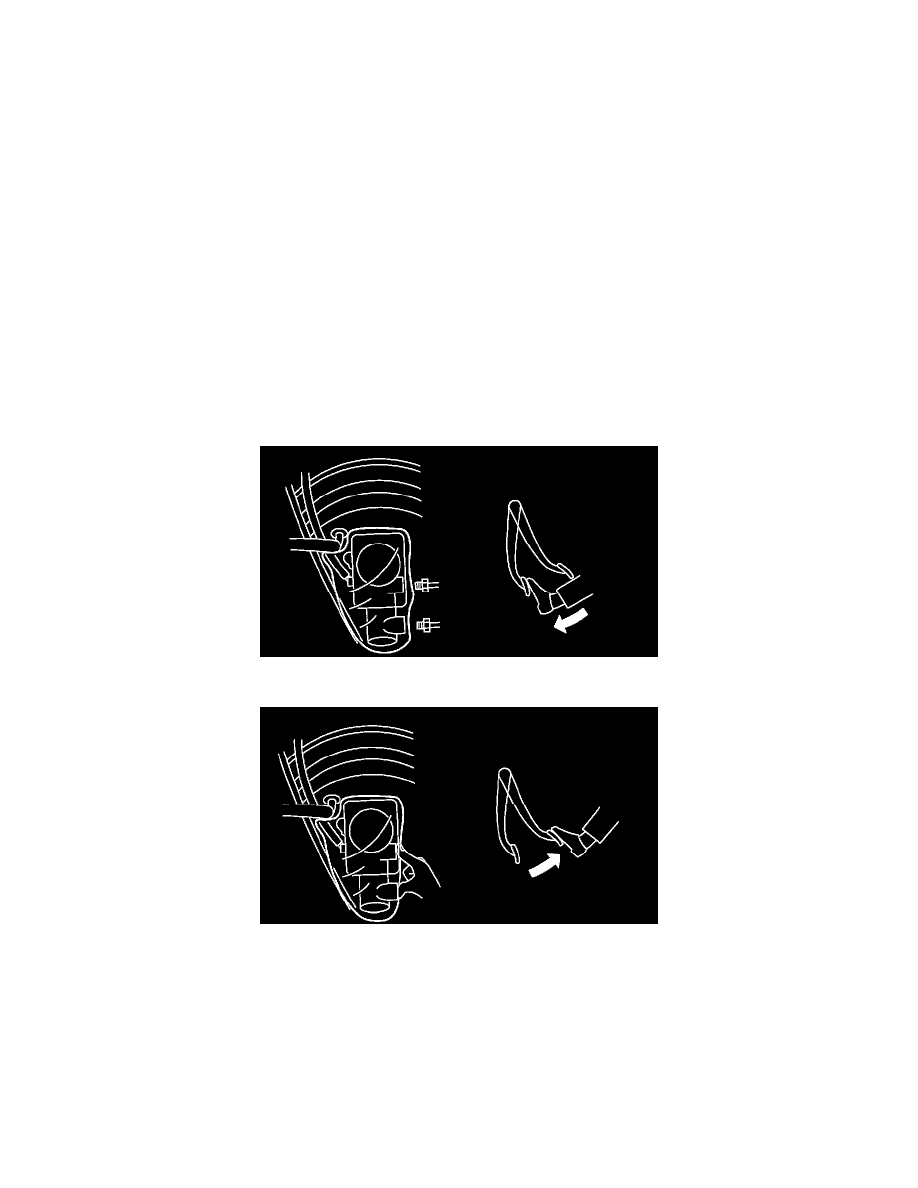9-2X F4-2.5L (2006)

Brake Bleeding: Service and Repair
Air Bleeding
PROCEDURE
Important:
^
The FMVSS No. 116, fresh DOT3 or DOT4 brake fluid must be used.
^
Cover the bleeder with waste cloth when loosening it to prevent brake fluid from being splashed over surrounding parts.
^
Do not allow brake fluid to come in contact with vehicle body; wash away with water and wipe off completely if spilled.
^
Avoid mixing different brands of brake fluid to prevent degrading the quality of the fluid.
^
Be careful not to allow dirt or dust to get into the reservoir tank.
MASTER CYLINDER
Note:
^
If the master cylinder is disassembled or reservoir tank is empty, bleed the master cylinder.
^
During the bleeding operation, keep the brake reservoir tank filled with brake fluid to eliminate entry of air.
^
The brake pedal operating must be very slow.
^
For convenience and safety, two people should do the work.
Loosen the wheel nuts, jack-up the vehicle, support it with rigid racks, and remove the wheel.
Disconnect the brake line at primary and secondary sides.
Put a plastic bag cover on master cylinder.
Carefully depress and hold the brake pedal.
Close the outlet plug with your finger, and then release the brake pedal.
Repeat step 4) and 5) until the brake fluid is completely bled from outlet plug.
Remove the plastic bag.
Install the brake pipes to master cylinder.
Tightening torque: 15 Nm (1.5 kgf-m, 10.8 ft. lbs.)
Bleed air from the brake line.
BRAKE LINE
Note:
^
During the bleeding operation, keep the brake reservoir tank filled with brake fluid to eliminate entry of air.
^
The brake pedal operating must be very slow.
^
For convenience and safety, two people should do the work.
